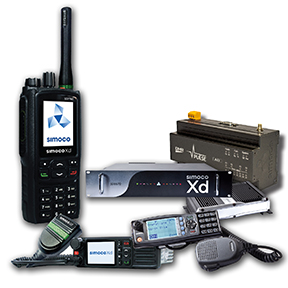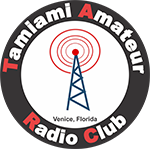Introduction to DMR Radios
Digital Mobile Radio (DMR) is an open international standard developed and ratified by the European Telecommunications Standards Institute (ETSI) in 2005. As a technology guiding body the DMR Association, also established in 2005, supports ETSI throughout the DMR standardization process and interoperability testing (IoP).
DMR Association membership is open to any person or organization interested in using or building DMR products or in supporting the published DMR standards in other ways. This benchmark now provides a full set of standards covering voice, data services and conformance testing procedures. DMR aims to cost effectively provide a low-complexity digital standard to replace analog radio systems. The ETSI DMR Standard, TS102 361, defines three different tiers though it should be noted that the DMR Association concentrates its effort on the professional use of DMR Tier II and Tier III.
- Tier 1 is a license free digital radio platform
- Tier II is digital a conventional radio platform
- Tier III is digital trunked radio platform
DMR Tier I products are best suited for personal recreational use and other settings that do not require wide area coverage or an advanced radio feature set. These radios were designed for license-free use in the 446 MHz band, known in Europe as the PMR446 band. They utilize a maximum of 0.5 Watt RF power output with fixed/integrated antennas, no use of repeaters or telephone interconnects DMR Tier I devices are not suitable for emergency use or business applications as there are a limited number of channels and usage is on a first-come-first served basis.

DMR Tier II was developed for the sole purpose of replacing conventional analog two-way radio systems with a pin-to-pin digital solution, meaning the digital system should perform the same with regard to coverage and application. This includes the use of a single site repeater or a multisite network of repeaters just as the previous analog two-way radio network had. The designers of DMR opted to use a two slot Time Division Multiple Access (TDMA) as the underlying technology for this standard.
DMR Tier III was the logical next step for this two slot TDMA technology. A trunked radio network makes use of several repeaters all on different frequencies within the same band operating together under computer control to allow the pooling of resources for several agencies or organizations. Typically a control channel integrates the intelligence required to organize and administer the radio fleet. Utilizing DMR Tier III the capacity increases and many additional features are far easier to implement than on a conventional or simulcast system. These digital trunked networks deliver feature rich mission-critical communications over wide geographic areas.
Radio System Design
Before diving into benefits and constraints it is worth defining where we have come from in a wireless world. Prior to January 1st of 2016 mainstream radio in the Very High Frequency (VHF) and Ultra High Frequency (UHF) spectrum was wide set at typically a 25 KHz spacing, though some VHF spectrum was designed at a 30 KHz spread. As of February 16, 2016 the FCC Wireless Telecommunications Bureau dismissed all applications in the 150-174 MHz (VHF) and 421-470 MHz (UHF) bands that listed wideband-only emissions. This action effectively forced public safety and industrial/business land mobile radio systems to migrate from the wideband 25 kHz efficiency technology to a narrowband channel of at least 12.5 kHz efficiency technology.
During the period leading up to this process if you were to consider a radio system for practical applications, such as SCADA and Telemetry, a new narrowband licensed radio frequency (RF) channel was preferred over an unlicensed one for clear command and control purposes. Unlicensed radio does have applications in closed spaces such as pit mines, tunnels or parking structures where the RF can be contained and outside interference minimized or mitigated. Unlicensed radio does have complimentary uses to licensed narrowband frequencies as we are learning with the advent of LTE (Long Term Evolution) technologies.
In the United States the Federal Communications Commission (FCC) oversees licensed narrowband radio via coordination to make more efficient uses of the limited Land Mobile Radio (LMR) spectrum for public benefit. There are different methods of employing the RF spectrum assigned.
- Simulcast
- Conventional
- Trunked Radio
For wide area coverage reliability, the issue is always related to talk back coverage, from the mobile or portable radio terminal. Dependent upon frequency the portable radio could be 0.5W to 5W output power through a unity (no gain) antenna. By the same token the mobile radio could range from 5W to 50W output power through a low gain antenna. Finally for comparison the base station or repeater could range from 25W to over 100W output power through a large gain antenna. Antenna gain provides compensation for feed line and combining equipment losses and for that purpose it is often utilized in overall RF system design to balance the radio system. By doing so we remain a good RF neighbor as well as provide a noticeable increase in system accessibility and dependability.
Simulcast finds a place with the limited RF spectrum and through shared resource plans. Simulcast radio enables the wide area use of a single frequency or frequency pair. As one possible cost effective solution, the DMR simulcast system takes advantage of conventional radio over multiple tower sites simultaneously. As mentioned earlier, the DMR purpose was replacing conventional analog two-way radio systems with a pin-to-pin digital solution. In a simple form we can now receive signal from one or more tower site locations and through mechanisms select or vote upon the best signal representation to use. In return, the reply is generated and sent to these multiple tower site locations for simultaneous transmission. Due to radio wave propagation characteristics, accomplishing this can be a real trick, though rest assured, the appropriate simulcast technology can properly manage successful communications.
 DMR Tier II Conventional radio is the same as it was in analog radio. There is a repeater at a tower site that intends to receive, understand and regenerate the signal in order to cover the wide area as required. As with analog this DMR Tier II repeater could be connected to a dispatch or paging console or it could exist as a standalone entity. The same simple applications that analog radio supported, the DMR Tier II conventional digital radio can as well. These are things such as paging tones, GPS and basic messaging. For a small to medium sized organization a DMR Tier II conventional network may be all that is required. The two slot TDMA format provides two talk concurrent paths effectively generating dual virtual channels inside of one 12.5 KHz licensed frequency pair. Expansion takes the form of additional radios, and corresponding RF channels, at either the same tower site location or at another. Different tower site locations modify the footprint of the area covered by this private radio system.
DMR Tier II Conventional radio is the same as it was in analog radio. There is a repeater at a tower site that intends to receive, understand and regenerate the signal in order to cover the wide area as required. As with analog this DMR Tier II repeater could be connected to a dispatch or paging console or it could exist as a standalone entity. The same simple applications that analog radio supported, the DMR Tier II conventional digital radio can as well. These are things such as paging tones, GPS and basic messaging. For a small to medium sized organization a DMR Tier II conventional network may be all that is required. The two slot TDMA format provides two talk concurrent paths effectively generating dual virtual channels inside of one 12.5 KHz licensed frequency pair. Expansion takes the form of additional radios, and corresponding RF channels, at either the same tower site location or at another. Different tower site locations modify the footprint of the area covered by this private radio system.
DMR Tier III Trunked Radio is the most complex solution of the three tiers. It still carries on the underlying ETSI and DMR Association purposes of replacing conventional analog two-way trunked radio systems with a low-complexity cost effective pin-to-pin digital solution. The trunked control aspect can be accomplished in a multitude of ways. Some DMR Tier III trunked solutions utilize a central node architecture as an IP network might, where other solutions establish and maintain a true distributed architecture model where any base station at the site can become the site controller if provisioned to do so. This is dependent upon exclusive use FB8 FCC channel procurement and other factors. The benefits of DMR Tier III trunked solutions far outweigh the initial design element details that make it seem complex. Built for a large customer base, trunked radio is well suited for multiple smart applications running simultaneously. These include things such as Stun/Revive/Kill, GPS, Man Down, Lone Worker, OTAP (Over The Air Programming) and short message service.
As with conventional radio, DMR Tier III trunked expansion takes the form of additional radios added to the site locations for capacity. To simplify, let’s consider we have more than one radio in the rack programmed and configured to operate on this sample DMR Tier III network. This network is a two slot TDMA format and as such we have two virtual channels per 12.5 KHz frequency. The primary site master will generate and transmit the control channel on the first slot of its frequency. The other slot can then be utilized as a talk channel, data channel or both. Each slot of repeater two, three, four and so on can be utilized as talk channels or data channels, because the first repeater is handling control. For those not aware of how a trunked system operates the radio terminal or Mobile Station (MS) as it is referred to in ETSI TR 102 398 remains in contact with the network by receiving the control channel on a known frequency. When the end user wants to communicate the Push To Talk (PTT) on the radio is depressed sending a request over the control channel to the site master for processing. This site master assigns the conversation to one of the available talk channels where the conversation takes place. Once the conversation is over the talk channel is available for reassignment. The same holds true if we have a data message to send and the number of available talk paths at each tower site determines overall system capacity.

